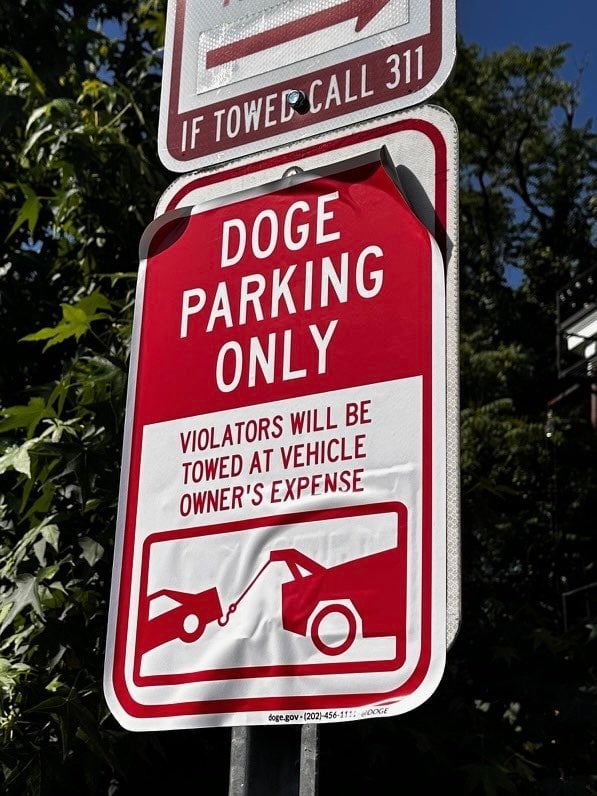On January 8, Richard Sarles walked into his final board meeting as Metro’s general manager. It was a triumphant afternoon. During the hourlong sendoff, ten different board members extolled Sarles. One person played a video tribute to baseball star Derek Jeter and compared him to the retiring director. “You were both at your best,” the staffer said, “when times were tough and you were surrounded by those who doubted that the job could be done.”
Sarles arrived at Metro in the aftermath of the 2009 Fort Totten crash, the deadliest in its history, which exposed Metro’s negligent safety practices to the world. He’d closed out most of the National Transportation Safety Board’s post-crash recommendations and launched a $5-billion capital improvement plan to fix the aging infrastructure responsible for the disaster. In a unanimous commendation, the board cited the GM for “rebuilding credibility and the region’s confidence in WMATA.”
Sarles was touched. “It brought a tear to my eye,” he said at the meeting, after crediting the 2,000-year-old Athenian code of civic responsibility for guiding his work. “When you enter public service, you find things the way they are,” he said. “And when you leave it, hopefully you’ve made an improvement while you were there.”
The meeting’s tone would probably have surprised a lot of ordinary Metro riders. Washingtonians used to celebrate Metro with a boosterish pride. But over the past decade, griping about rush-hour meltdowns had become a staple of office water-cooler conversations. Compared with the safety improvements that board members were touting, the question on many riders’ minds was more prosaic—but possibly more crucial to the system’s survival: Could Metro even be trusted to get people to work on time?
Unfortunately, both the already grim reliability record and the allegedly improved safety record were about to get a lot worse.
Four days after the party for Sarles, a 61-year-old woman died in the now-notorious smoke incident at L’Enfant Plaza, and a year of even more exasperating service outages began. There was the oil spill outside Medical Center, the derailed train at Smithsonian that closed six downtown stations at rush hour, the fire at Stadium-Armory that caused weeks of delays. By October, the chaos triggered by failures in routine operational systems was so bad that the Federal Transit Administration stepped in and took regulatory control of safety issues at Metrorail. Our subway is now the only one in American history to find itself under direct federal oversight.
Not surprisingly, commuters in growing numbers have begun chucking their SmarTrip cards because they’ve lost faith in Metro. A recent Metrorail report showed that even as the region has grown, ridership declined by 5 percent from 2010 to 2015 partly on account of Metro’s reliability. But Sarles’s exit has also exposed some unsettling truths about Metro’s finances and management culture that call into question its whole future. How did the formerly beloved system become one that can’t do its most basic job?
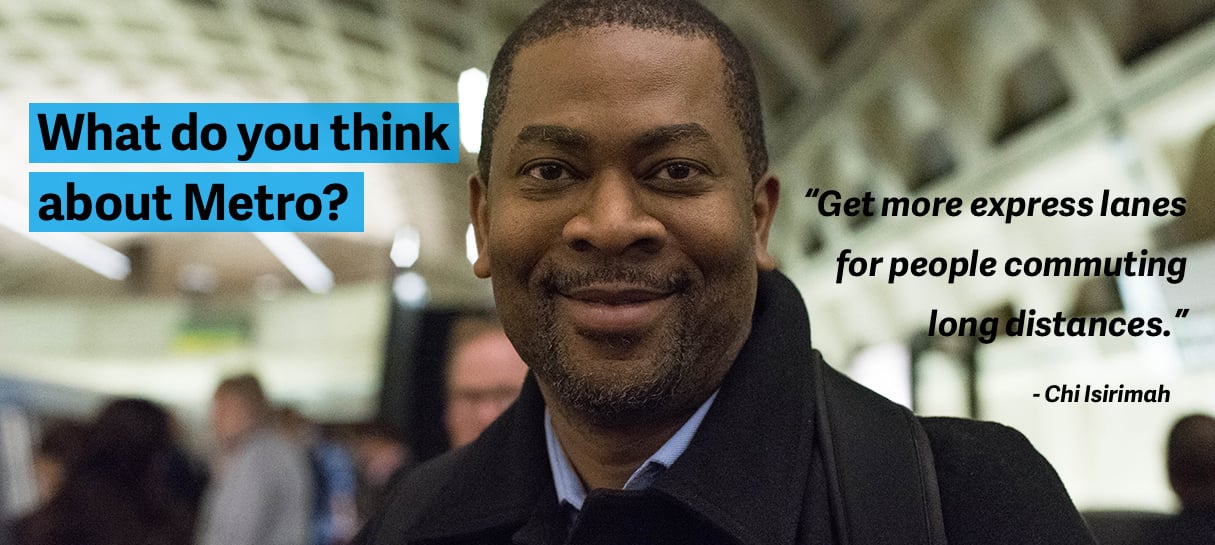
Ray Scarbrough was pleasantly surprised when a Metro recruiter contacted him about a job at Metro’s Rail-Operations Control Center. Scarbrough, an assistant trainmaster for New Jersey Transit, wasn’t looking for a change. But the recruiter made a convincing pitch, and the $74,000 starting salary was a nice bump in pay. In the spring of 2014, he accepted.
The ROCC is Metro’s air-traffic-control tower; jobs there are considered among the system’s most critical. They’re also the most challenging. Controllers must do about 20 weeks of classroom study before training in the control room and eventually directing trains themselves. On his first day, Scarbrough took note of the ROCC’s gigantic digital map plotting the precise movements of every train in real time. Wow, he recalls thinking. It looks like a miniature NASA mission control.
But the impression didn’t last long. The classroom instructors relied heavily on books that Metro provided. And the books were riddled with errors that were glaringly obvious to trainees with experience, like Scarbrough, who had spent the bulk of his 18-year career inside command centers. His classmate Chuck Watkins, who had spent ten years at BNSF Railway and Amtrak, also noticed the errors—and the two began correcting the mistakes their instructors presented in class.
Soon, Scarbrough and Watkins say, the teachers began asking them to review class tests. “We’d go through each question and they would ask us, ‘What do you think?’ ” Watkins says. “We would answer, ‘Oh, this doesn’t make sense,’ or ‘This is not right.’ . . . . Then the next day, they would test us on this test that we just created.”
Even those who didn’t see the questions beforehand considered the evaluations a breeze. “I’ll be honest with you—I studied harder for fast-food jobs and waiter jobs when I was in college than I did for their program,” says Kenneth Colvin, who was a US Army air-traffic controller before joining Scarbrough and Watkins’s training class. “Their testing program is a joke.”
Things got even stranger when the new hires started on-the-job training and found a workplace that, according to five recent ROCC trainees, was inhospitable to newcomers. The ROCC’s employees were mostly WMATA lifers who almost never left the Landover facility. (Even when the Silver Line opened, controllers watched a DVD about the extension instead of touring it.) Many veterans hardly spoke to the new hires, who felt as if they were being iced out. “They wanted us to fail,” Colvin says.
The ROCC candidates had found themselves mired in Metro’s most unusual division—a cloistered fiefdom defined by petty power squabbles and lawlessness.
Related: This Man Has Spent 30 Years Suing Metro, and He Knows Everything Bad That Could Happen to You
In a post-smoke-incident review, the FTA discovered that although regulations require controllers to be recertified annually, none had been since 2012. And up-to-date rule books weren’t always available, because of problems with the printer and three-hole puncher. Not that current manuals would have mattered. Controllers saw little need for written procedures or checklists. “Most veteran [controllers],” FTA investigators said in their report, “prefer to run the Metrorail system largely based on their past experiences and the information ‘in their heads.’ ”
Riders have experienced the consequences of this paperless approach. During the smoke incident, ROCC employees bungled the emergency by activating the wrong tunnel fans, according to the NTSB. To prevent a future problem, the NTSB urged WMATA to develop what the controllers have resisted: written procedures.
The ROCC’s insular culture was partly shaped by financial motives. The center was sorely understaffed—according to the FTA, of 52 controller positions this past spring, 18, or about a third, were unfilled. Because of the shortage, controllers could significantly augment their salaries with overtime; the FTA found that some worked 12-hour shifts as many as seven days a week. “You’d have people in there making almost double their salary in overtime,” Scarbrough says. According to the trainees, the parking lot reserved for ROCC staff was filled with Mercedes and BMWs. “It looks like a CEO’s parking lot,” Colvin says.
To some veterans, the new hires were a threat to their paydays. “The trainers warned us about that,” says Colvin. “They were like, ‘Look, [controllers are] going to be hostile toward you because you’re cutting into their overtime.’ ”
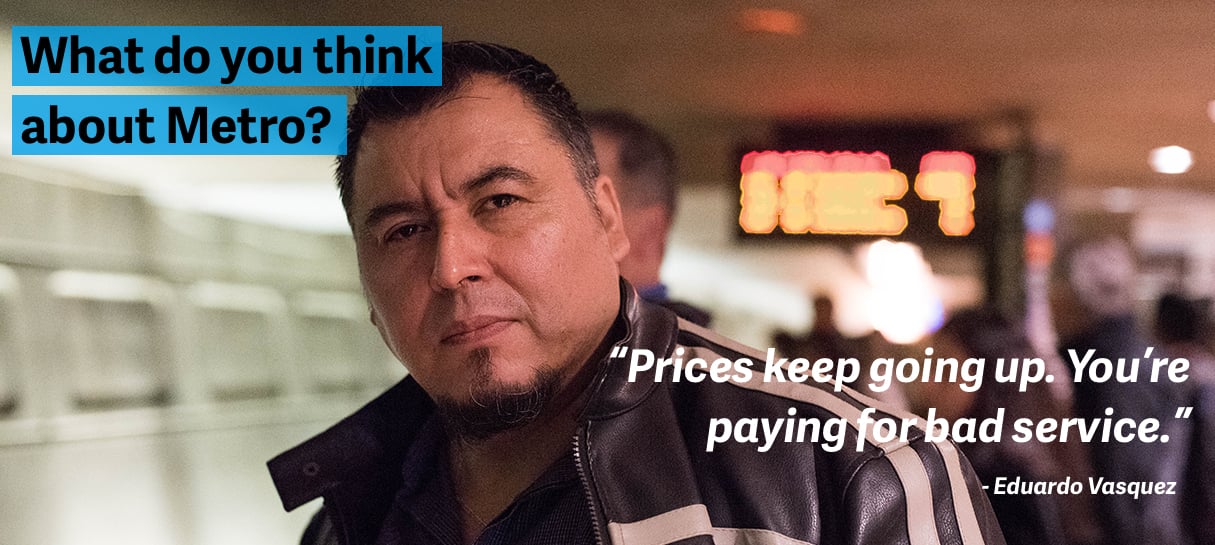
The hostilities extended to other parts of the agency. Controllers and train operators were constantly at one another’s throats because, according to the trainees, controllers belittled operators. “They treat operators as if they aren’t capable of doing anything,” Watkins says. “And [the veterans] told us that. They said, ‘Don’t trust operators.’ ”
The men say operators would occasionally get so mad that they would “break the train” by dumping the air out of brake lines. The maneuver temporarily disables the train and requires ROCC staff to go through a lengthy troubleshooting protocol. “[Operators] will do something like this because they think, ‘Well, you screwed me, I screw you,’ ” Colvin says. But riders feel the brunt of it, too—they have to sit and wait (or offload) until the situation is resolved.
Controllers can’t prove operators sabotage trains for personal retribution, but the trainees say the practice is well known. ROCC veterans kept track of repeat “train breakers,” Watkins says, and trainees were warned about one driver who “was almost guaranteed to break her train if she didn’t like the way you talked to her.” A Metro spokeswoman says, “We have no reason to believe this is a widespread or systemic issue.”
The trainees were equally disturbed by the poor safety practices they witnessed. The ROCC was noisy and chaotic; controllers yelled across the room and were distracted by their cell phones. Radio communication with trains was often impossible because dead spots exist throughout the system. Alarms sounded constantly, triggered by everything from power surges to water in tunnels—although many were false warnings. “It’s well over a thousand alarms a day,” Watkins says. “But they ignore pretty much all of them.”
How was this dysfunction tolerated? Leverage. Because controllers—the most critical employees—were in such short supply, they were allowed to follow their own rules. “The ROCC is like God at WMATA,” Scarbrough says. “They operate kind of autonomously from the rest of the company.”
It’s a self-reinforcing problem. Metro hasn’t been able to improve the ROCC culture because it’s so beholden to the current personnel—yet the current personnel are a big part of the staff shortage. Despite a concerted effort to recruit and train new hires, Metro added just three controllers between 2011 and 2015, the FTA says.
Watkins quit after six months because of the toxic environment. Today he delivers new trucks to their buyers. Colvin left after a year on account of the unsafe practices, which “just blew my mind,” he says. He’s now working in Kuwait with a government contractor. Scarbrough says WMATA fired him in 2014 for not properly informing his bosses when he took time off for a family situation; he insists he followed the correct protocols. He now works as an assistant train director at Amtrak.
After the smoke incident, Scarbrough, Watkins, and a fellow trainee—none of whom worked for Metro anymore—laid out their ROCC experiences in cautionary e-mails to regulators and politicians. “This,” they wrote, “should no longer be tolerated.”

Metro wasn’t always such a mess. When it opened in 1976, more than 50,000 people lined up to ride the new Red Line, and it was love at first sight. Comfortable cars, bright carpeting, and clean, architecturally stunning stations made Metro seem welcoming. Accidents were rare. “Can anyone in his or her right mind seriously maintain that Metro is not the single best thing that’s happened in the metropolitan area in the past three decades?” a giddy rider wrote to the Washington Post in 1996.
Yet the system had structural problems baked in from the beginning. Metro’s planners had rushed to craft a subway under local control before the federal government could impose its own authority, all while under pressure from highway lobbyists eager to kill the project. As plans were finalized in the 1960s, according to Zachary M. Schrag, author of The Great Society Subway, the planners scrambled to make decisions that still plague Metro today.
The first was the power-sharing compact among DC, Maryland, and Virginia. The hastily designed agreement creating WMATA handed control of the agency to political appointees from three jurisdictions (four, once the feds were added). The board reps aren’t required to have a background in transit—they just need to use Metro.
This didn’t hinder the agency much in the beginning, when Metro’s main job was to build new stations. But the arrangement became unwieldy after 2001, once the original build-out was complete. At that point, the agency had to transition from what was a de facto construction company to a rail operator. Officials were now tasked with the more mundane challenges of providing reliable, timely service along 103 miles of tracks. And parts of the infrastructure were already more than 30 years old.
Suddenly, the consequences of earlier planning decisions became apparent. WMATA had been formed with little thought about finances. There was no realistic plan to pay for the system long-term—local officials expected Uncle Sam to bankroll construction and fares to fund operation costs. Other cities have a so-called dedicated revenue stream, money automatically appropriated through taxes. New York gets 35 percent of its funding this way, Boston 47 percent, and Chicago and Atlanta 56 percent. WMATA, by contrast, collects a minuscule 2 percent of its budget through dedicated revenue.
The agency’s leadership thus has to convince competing jurisdictions to appropriate cash from their public coffers each year to help fund day-to-day costs. However, according to former Metro officials, it was hard to get the board excited about routine work. “When you open a new rail station, that’s a very sexy thing,” says Harold Bartlett, a 23-year WMATA veteran who was chief of staff from 1997 to 2006. “But when you [want to] buy a new rail-wheel truing machine that makes the wheels not go clickity-clack on the rail cars, that doesn’t get a lot of attention.”
The board generously supported other parts of WMATA. According to a 2010 report by former Metro GM David Gunn, then a consultant, government funds for the buses doubled and for handicap transit tripled from 2000 to 2009. During the same period, rail funding increased by only 12 percent.
Related: Suck It Up, DC—Metro Is Actually Pretty Good + The 9 Kinds of Metro Haters
It came down to politics, Gunn says: A board rep might not be able to get a new Metro station in his district—too costly—but could certainly swing a bus stop. “They stripped [funding] out of the rail system, and they had it go to the handicap services or to buses,” he says. “And they did that because those are politically positive things.”
At the same time, board reps began to press for longer service hours—another way to score points with constituents. In 2003, Metrorail pushed back its closing hours to 12 am on weeknights and 3 am on Fridays and Saturdays. That was good news for riders, businesses, and the environment. But it accelerated the infrastructure’s deterioration. The new schedule left less time when Metro was closed and maintenance crews could access the tracks. On weeknights, “you’re talking about three hours of actual work time,” says Aaron Wiggins, a maintenance manager who retired in August after 27 years. “Ain’t a lot you’re going to get done in three hours on a nightly basis. It’s impossible.”
This situation might have been less crippling had Metro’s original architects built an additional track. The older systems in New York and Chicago both have four in places. Here, it was deemed too expensive. As a result, 40 years later, the only way for trains to bypass active work areas is to single-track around them, worsening delays.
By the early 2000s, workers began to notice a growing disregard for safety throughout Metro. “We’d report [safety violations] and then nothing would be done,” says Sherman Johnson, a WMATA mechanic from 1983 to 2010. “The [work order] would be closed, indicating that the problem had been corrected, but then you’d go and check and most times no one had even been there, let alone fixed anything.”
Meanwhile, management focused on making sure employees wore their uniforms correctly and used Metro-issued microwaves to cook food instead of their own. “Things are falling apart and you’re worried about a microwave oven,” Johnson says. “I mean, it was just dumb.” Accountability for day-to-day repairs had all but vanished: “Consciously or subconsciously, everyone at Metro knows they’ve got a job for life,” he says, “unless they sit there and smoke crack in the middle of the platform.”
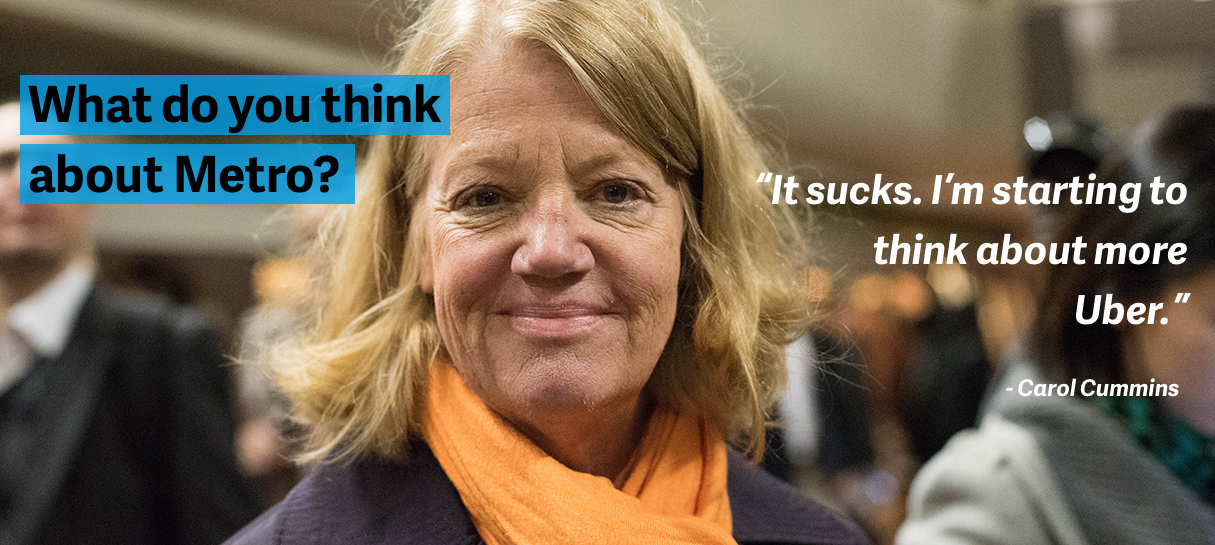
Sarles arrived in April of 2010 and found an agency in crisis. With its decaying bones and casual approach to safety, Metro had become increasingly dangerous. Twenty riders were injured in a collision at Woodley Park in 2004, four workers were killed between 2005 and 2007, and 23 passengers were hurt in a 2007 derailment at Mount Vernon Square. Then came the worst disaster of all, the 2009 Red Line crash at Fort Totten. Nine people died, and 52 were hospitalized.
Then-NTSB chairman Deborah Hersman called Metro’s absent-minded safety culture “a sickness” and accused subway officials of “monkeying around.” NTSB member Robert L. Sumwalt told the Post, “This accident is a classic organizational accident.” Metro had devolved from a shining national model to a rudderless and demoralized mess.
Although Sarles was newly retired from New Jersey Transit, Metro’s board persuaded him to come to Washington for one year. Sarles said he didn’t want the job permanently. But when his contract expired, Metro’s directors couldn’t find anyone to replace him.
An engineer by training, Sarles was known to roll up his sleeves and fix problems. “He was a project manager,” says Peter Benjamin, then WMATA’s board chairman. “He was the kind of person who if you had to reengineer stuff and rebuild it, he was the guy you wanted. And in the aftermath of that accident, that’s a lot of what went on.”
First up was a wholesale restructuring of the board, which had become overly meddlesome in operations and had steamrolled previous managers. Those with reputations as micromanagers were cleaned out, and rules were rewritten to give greater autonomy to the GM. Sarles then used his freedom to tackle deficiencies identified after the crash. He addressed most of the NTSB’s safety recommendations and secured a $5-billion pot of capital-projects money to start the repairs that had been put off.
Incident stats improved, and in 2014 the American Public Transportation Association gave Metro its gold award for safety. But the accolades served only to paper over deeply rooted problems still lingering. “Beyond the facade of ‘everything is under control,’ ” says a former Metro official, “things weren’t under control.”
While executives at Metro’s downtown headquarters trumpeted their rosy data, key agency divisions were unraveling.
FTA investigators saw just how badly when they gathered near the Greenbelt stop early on March 24. They were there to observe a maintenance crew as part of their exhaustive examination of the system. And this was no surprise inspection. Metro had handpicked the worksite and a straightforward procedure. Shortly after the crew got to work, however, the workers realized they had the wrong part, and because they weren’t able to access the tracks until 2 am, there wasn’t time to get the correct equipment before Greenbelt opened.
“Even with WMATA selecting a simple activity for FTA to observe,” the regulators wrote in their notes, “this task had to be aborted due to inappropriate work planning and technical issues.”
Metro was struggling to meet two contradictory imperatives. One concerned evolving from a glorified commuter rail to an actual big-city subway—a system that could take people home from a late-night ball game as well as a day at work. The other was maintaining a system designed for riders who’d be in bed by midnight. “It’s aging, there’s more maintenance that needs to be done,” says a retired manager, “and there’s less time to do it.”
By 2015, according to the FTA, the window for repairs had dipped to 90 minutes at times, down from six hours when Metro was new. As a result, the FTA says, up to 30 percent of repairs had to be postponed, leaving more than 3,200 work orders for “priority 2” defects such as battered rails unresolved as of June. Maintenance managers admitted that “most of their work consists of ‘band aid’ fixes for the most serious defects.”
Metro workers blamed the board, which they believed was overeager to find ways to please the public. According to FTA documents obtained through a public-records request, track workers identified “the direction of the Board of Directors, and the pressure placed on the [assistant GM for operations, deputy GM for operations], and others within the organization to expand service and increase ridership as the roadblock to obtaining additional time” for repair work.
This wasn’t the only troubling thing the feds found in Metro’s plumbing. The FTA discovered that train drivers regularly relieved themselves on the tracks because supervisors, due to inadequate training, weren’t comfortable taking the wheel to give them bathroom breaks.
Metro leaders weren’t entirely transparent with the public in explaining service changes or disruptions. In 2012, for example, Metro unveiled Rush Plus on the Orange, Blue, and Yellow lines to enable it “to serve more customers, reduce crowding and provide new transfer-free travel opportunities.” However, Rush Plus was little more than a smokescreen for a service cut on the Blue Line. In preparation for the Silver Line’s opening, Metro decided to reduce the bottleneck at the Rosslyn tunnel by cutting Blue trains. The new schedule left that line’s riders with 12-minute waits during rush hour. Yet WMATA insisted on portraying the shift as a “service enhancement.”
Metro also spun certain stats in its favor. In 2010, it began releasing a monthly “Vital Signs,” a safety and reliability scorecard. But a 2011 report showed on-time rail performance exceeding targets only because it had revised the benchmark down by 5 percent.
For all Sarles had done to fix the specific flaws identified after the Fort Totten crash, Metro was still struggling in fundamental ways. Despite the board’s fawning speeches, he left an agency with the same underlying problems (aging infrastructure, a casual safety culture, and no accountability from management) that had existed on his first day.
“When you have engineers and project managers, they’re really driven to get what they see as their mission done,” says a former Metro official. “And they’re really good at explaining what happened—after something happens. They’re less good at ‘Okay, what do we need to do to make sure that doesn’t happen again?’ ” Messages for Sarles were not returned.
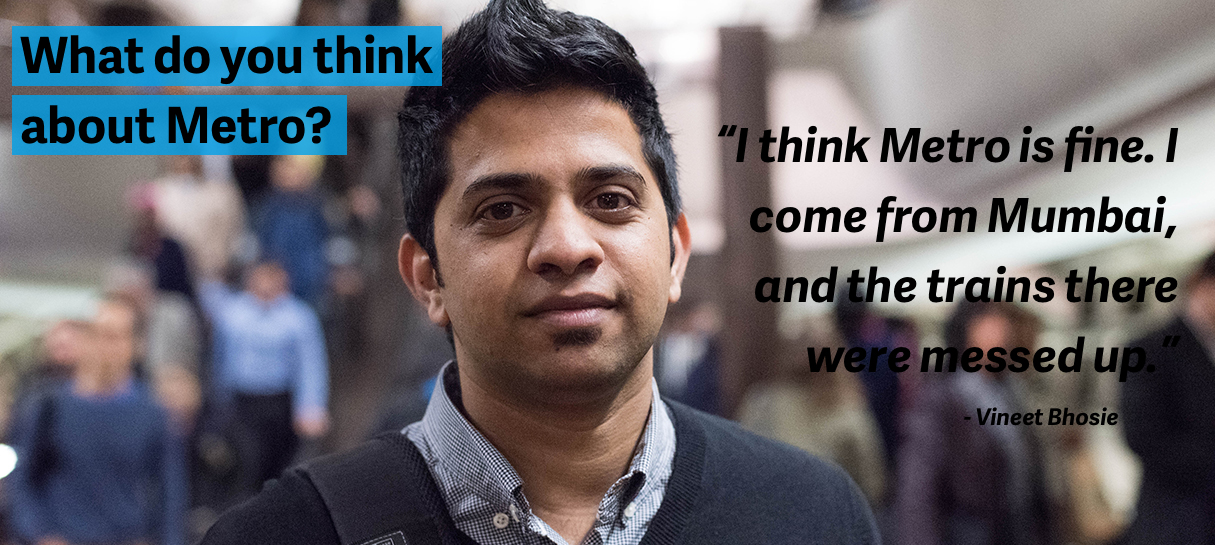
After a lifetime of shortsighted decisions, Metro is now trapped in a cycle of dysfunction that threatens its existence. Neglect has led to delays so frustrating that commuters are abandoning the system and therefore putting its main source of revenue at risk.
Former GM Richard White predicted as much back in 2004. “We’re talking about a systemic service meltdown condition as early as three years from now,” he warned. “It’s reliability falling, ridership loss, road congestion increasing and air quality decreasing. It’s a death spiral.”
Sarles managed to wring capital funds from politicians for big-ticket repairs, but without any dedicated funding, Metro’s financial future is fragile. According to agency documents, the annual growth of operating revenue is projected to slow to 1 percent over the next decade—but expenses are expected to continue climbing at 6 percent. If that occurs, the shortfall between revenue and expenses will nearly triple—to more than $2 billion by 2025.
The board is scrambling to address this gap—but not without getting sidetracked by narrow-minded squabbles. After Metro board member Jack Evans announced that he and a fellow DC rep will veto any proposal that uses fare hikes to balance the budget, Maryland board member Michael Goldman said his state won’t boost its subsidy enough to cover the shortfall. Two days later, Goldman and another Maryland member torpedoed a pension-funding proposal that Evans and every other voting member supported. “To use a jurisdictional veto like this is unheard of,” Evans pleaded, according to the Post. In response, Goldman held up a sheet of paper and smiled. “Just to clear the record,” he said, “the last jurisdictional veto was applied by DC members in 2010 on a motion to reallocate snow-removal funds. Thank you.”
Washington, of course, isn’t the first city to face a transit crisis. In the late 1970s and early 1980s, New York’s subway ridership hit 60-year lows on account of shoddy maintenance and derailments. Enter Richard Ravitch, a turnaround wizard who had zero mass-transit management experience. Ravitch organized town-hall meetings with disgruntled riders, some of which drew more than 1,000 people. The activism made good newspaper copy, and he used the sense of crisis to rally politicians. He struck backroom deals and secured a government subsidy that quadrupled the agency’s prior budget—the kind of guaranteed funding that Metro lacks. Ravitch’s politicking and creative funding approaches brought the system back from the brink.
Finances will be one of the first orders of business for Metro’s new GM. The board spent the year fighting over whether the new boss should be a financial-turnaround specialist—as DC and Maryland pushed for—or an engineering type like Sarles, as Virginia advocated. After its first choice fell through, the final embarrassment in a clumsy search process, it has now settled on Paul Wiedefeld, an aviation executive and former BWI airport chief who also has private-sector experience.
Among the issues Wiedefeld will encounter is the funding pressures presented by the 13,000-person, largely unionized workforce, which consumed nearly 75 percent of the 2015 operating budget. Conservative critics have long argued that federal grants encourage concessions to unions and force WMATA into overly generous contracts with its employees. But that can be an excuse as well: After all, New York, Boston, and Chicago have robust union cultures.
Related: 5 Possible Metro Fixes, Ranked
Wiedefeld will also have to rescue Metro from a financial jam that’s separate from the ridership decline. An FTA audit in 2014 found that the agency mishandled billions of dollars by awarding lucrative no-bid contracts, overbilling the feds, and paying at least one employee after he’d left the agency. The audit slowed Metro’s flow of federal cash to a crawl, and the agency has bridged the gap only by obtaining short-term loans. If the banks decide to cut off funding—Moody’s has already downgraded its bond rating—Metro would find itself in a serious bind.
While finances are key, Metro’s current management will tell you that a more reliable system is also going to require sacrifice—on your part. “Time and space is as critical to getting the work done as money,” says deputy general manager Rob Troup.
Washington wanted a world-class subway, one accessible late at night and on weekends. But after years of extending service while neglecting repairs, we might now have to live with longer waits. Officials say there simply isn’t enough time in off-hours to handle all the repairs required. The only option, they say, is for crews to do this work during the day. Trains will have to continue single-tracking through work zones. And this won’t be a short-term slowdown. The disruptions are likely to increase in the future, as the region grows and the infrastructure gets even older.
Faced with similar problems in 2013, Chicago shut down a ten-mile stretch of its Red Line for five months, providing bus service as a replacement. The move “saved hundreds of millions of dollars” and minimized the total disruption time, says Yonah Freemark of Chicago’s Metropolitan Planning Council. Riders basically got a brand-new line, he adds, and ridership increased by 2 percent.
“I’m currently floating an idea of shutting down station X to station Y for X weeks or however long,” says Metro board member Tom Bulger, “and do the goddamn job like how they did in Chicago.”
Months-long shutdowns or not, this new normal that Metro is suggesting will require Washingtonians to reset their expectations about just what constitutes high-quality rail service—how long we’ll have to wait for a train or how many stations may be closed on a weekend. It’s a frustrating prospect. But “this is the system that we have,” Troup says, “and this is how we’re going to have to manage it.”
This article appears in our December 2015 issue of Washingtonian.
6 more stories about Metro you should be reading:


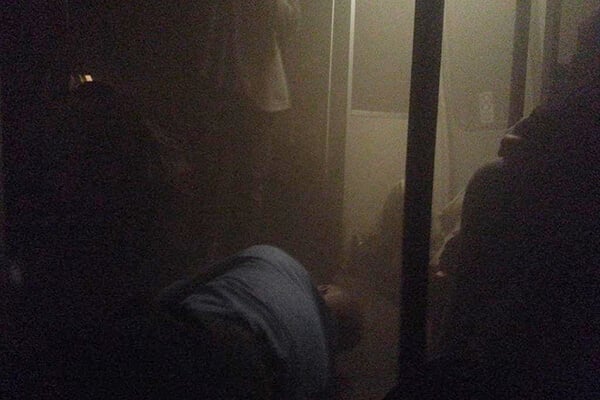
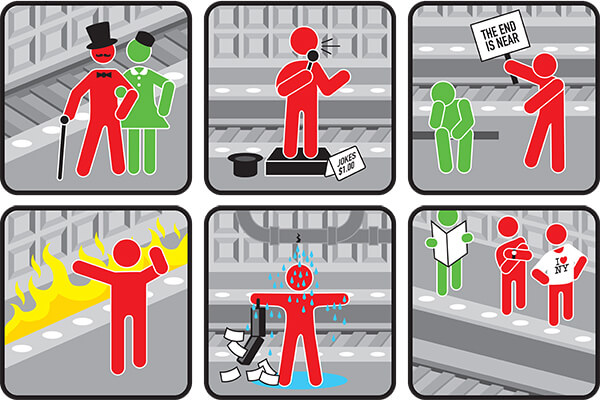

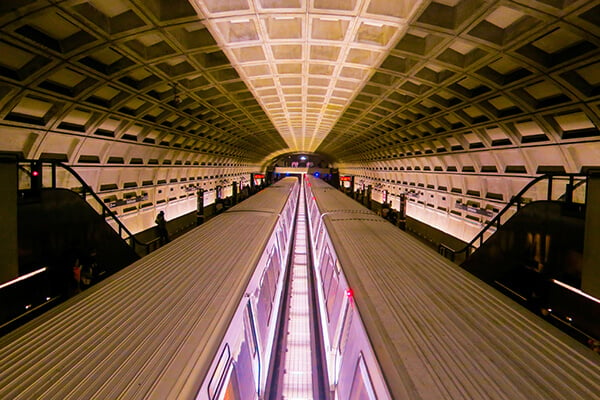

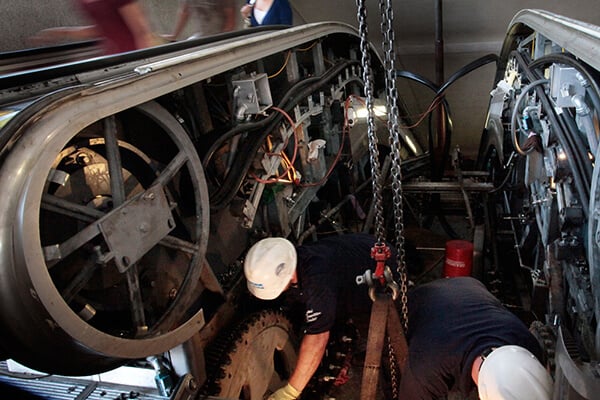
![Luke 008[2]-1 - Washingtonian](https://www.washingtonian.com/wp-content/uploads/2017/10/Luke-0082-1-e1509126354184.jpg)




